How to Shop in Today’s Grocery Store

Have you recently found yourself at a grocery store, staring at a shelf of ten different jars of strawberry jelly or bottles of Italian dressing, only to find several minutes have passed and you’re still no closer to making a decision? According to the Food Marketing Institute, the average number of items carried in a supermarket in 2017 was 30,098. The ability to choose from so many options allows customers the freedom to make purchasing decisions that best fit their priorities, such as price, taste, or sustainability; but it can also make grocery shopping quite overwhelming. With so many choices, how is one supposed to turn a complex environment into a simple one? Consider the following tips for navigating the 21st century grocery store like a pro.
Remove the virtual caution tape from the packaged food aisles.
A frequently heard tip for healthy grocery shopping is to stick to the perimeter of the store. The original rationale behind this advice was that the products located around the outer edges of stores are healthier (think produce, lean meats and fish, etc.). However, this advice is becoming less applicable today, as manufacturers innovate and reformulate packaged goods in response to consumer demand and evolving regulations pushing for improved nutritional profiles and clarity around ingredients used in foods and beverages. Don’t hesitate to enter the packaged food aisles next time. Instead of shopping in a circle, consider making your shopping path “E” or “Z” shaped!
Shop smart, waste less.
According to the Food and Agriculture Organization, one-third of food produced for human consumption is lost or wasted globally, which amounts to about 1.3 billion tons per year. To avoid wasting food and money, understand the various methods used by industry to support food waste reduction efforts. One approach is to mark products with voluntary “Best By,” “Sell By,” and “Use By” dates. Many consumers consider these dates to have the same meaning – okay to eat before the date, not okay to eat after the date. This is false and can lead to wasted food. Learn what each date means here. In addition, click here to learn why certain food additives show up on ingredient lists, and how they are used to help prevent food waste.
Look up, look down, look all around.
For a food or beverage company, getting a product placed at eye level on the shelves of a major grocery store is like running a commercial during the Big Game. It is extremely costly and highly competitive. Knowing this, be sure to scan the top and bottom shelves as well for products that may be slightly less popular, but could possibly be more nutritious, delicious or affordable.
Beware of mobile apps spreading misinformation.
Companies are taking steps to help consumers identify healthier or more nutritious options more easily. These include mobile apps, many of which provide nutrition and safety analyses of products or ingredients. However, some of these apps draw unsubstantiated, radical conclusions of products and ingredients that are not based on credible science and safety studies. For example, some go as far as to claim certain ingredients that are approved as safe to consume are “very dangerous and cause side effects, allergic reactions, or hyperactivity of your child.” It is important to question the quality of the evidence on which app developers are basing these claims, and to note that these apps do not represent actual recommendations by scientific authorities or food safety officials.
If you’re not eating it today or tomorrow, buy it frozen.
Especially in the case of fresh fruits and vegetables, nutrients start to decline immediately after harvesting and continue to do so during storage. For example, a study published in the Journal of Science of Food and Agriculture showed green peas lose up to 51 percent of their vitamin C during the first 24 to 48 hours post-harvest. Fruits and vegetables found in the frozen section of your grocery store are generally picked at peak ripeness when they contain the most nutrients, and there are usually no additional ingredients added to them before freezing.
Grab meat and dairy items last.
Thanks to stabilizing ingredients such as guar gum, your favorite ice cream can withstand the inevitable melting and re-freezing that occurs between the time the ice cream is packaged to the time you scoop it into your bowl at home. However, while additives help maintain the quality and safety of foods and beverages, it’s always a good rule of thumb to hit the packaged foods and produce aisles first. Leaving the highly-perishable items on your list to the end of your shopping trip will minimize the critical time those products spend out of the refrigerator or freezer.







 Every summer, the Institute of Food Technologists (IFT) hosts its annual conference to bring together passionate people working to innovate within the food industry space. The focal point of the multi-day event is food ingredients, and the exciting opportunities to use them ingredients in new products. This year’s conference was held in Chicago from July 15-18, and featured presentations that explored trends in food business and innovation, along with an exhibition hall that featured food and food ingredient companies of all sizes, from startups to large multinationals. As with previous years, a few key trends stood out, ultimately forecasting what’s to come by way of new products headed to store shelves. Below are the top trends to look forward to this coming year:
Every summer, the Institute of Food Technologists (IFT) hosts its annual conference to bring together passionate people working to innovate within the food industry space. The focal point of the multi-day event is food ingredients, and the exciting opportunities to use them ingredients in new products. This year’s conference was held in Chicago from July 15-18, and featured presentations that explored trends in food business and innovation, along with an exhibition hall that featured food and food ingredient companies of all sizes, from startups to large multinationals. As with previous years, a few key trends stood out, ultimately forecasting what’s to come by way of new products headed to store shelves. Below are the top trends to look forward to this coming year:


 If you have ever checked the list of ingredients on your favorite ice cream, yogurt, chocolate milk or frozen pizza, you’ve probably seen carrageenan listed. Whether you have noticed it before or not, carrageenan has been used in packaged foods for over 50 years, and its history in the world’s food supply dates back even further.
If you have ever checked the list of ingredients on your favorite ice cream, yogurt, chocolate milk or frozen pizza, you’ve probably seen carrageenan listed. Whether you have noticed it before or not, carrageenan has been used in packaged foods for over 50 years, and its history in the world’s food supply dates back even further.
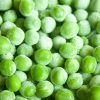
 Frozen foods have long been a staple in the Western diet, but they have evolved considerably in terms of safety, quality and packaging compared to the first commercially-sold frozen food.
Frozen foods have long been a staple in the Western diet, but they have evolved considerably in terms of safety, quality and packaging compared to the first commercially-sold frozen food.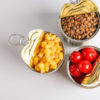
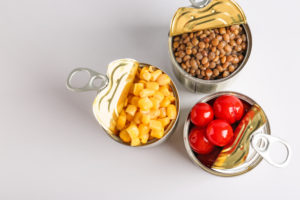
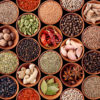
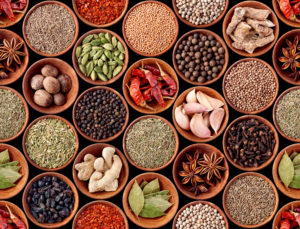 naturally-occurring ingredients. In 2013, James Kennedy, a renowned chemistry teacher and blogger, published a poster series called the “
naturally-occurring ingredients. In 2013, James Kennedy, a renowned chemistry teacher and blogger, published a poster series called the “